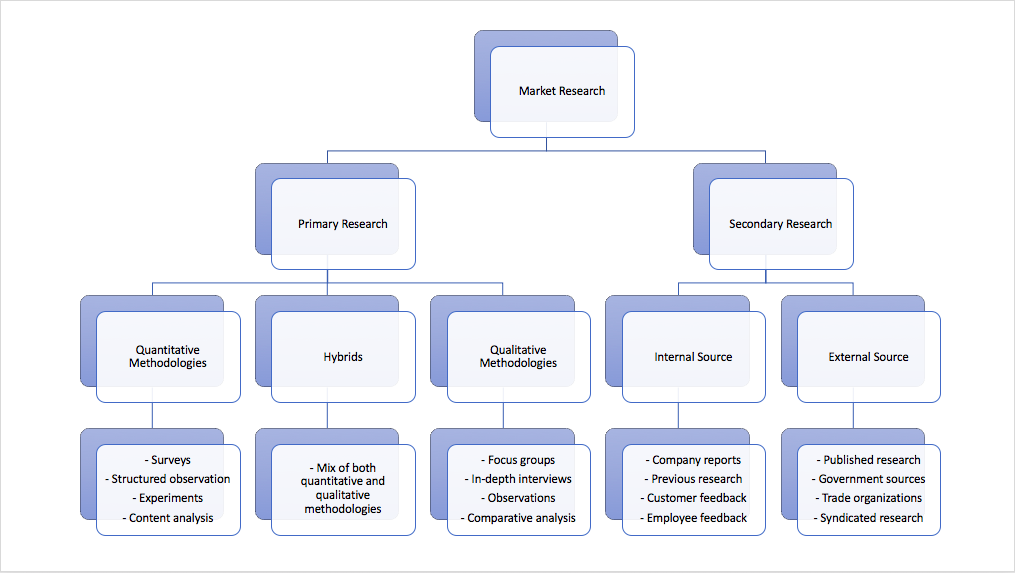These are a few of the many questions market researchers try to help others better understand. Simply put, market researchers pursue information with the purpose of using it to better position their clients to competition, future changes, and market shocks. Undertaking market research, whether formally or informally, is critical to the lifeblood of any business, group, or agency trying to maximize efficiencies. As the cliché goes, information is everything–without it you are left to indiscriminately navigate the market landscape. With a quality market research apparatus at hand, one can produce valuable insights that help to provide an always welcomed competitive edge.
The Basics
Market research can be carried out in a variety of ways but falls under two umbrellas: (1) primary and (2) secondary research. Primary research is the process of gathering information on areas of interest that are currently unknown, scarcely known (i.e., from a reputable source, anecdotal knowledge, etc.), or that build further on existing bodies of knowledge. This organic form of research can be carried out in a number of ways– using both qualitative and quantitative methodologies– via focus groups, surveys, interviews, and observations to name a few. With primary research, you are an information farmer of sorts, planting seeds to see what they’ll produce. Secondary research on the other hand is the gathering of information that is already readily available. For example, scanning the internet to find yearly growth figures issued by government organizations or trade groups as it pertains to a particular industry. To keep the tired analogy going, here you are the equivalent to an information hunter-gatherer, you want to collect what’s already out there.
While primary research is the Rolls Royce of market research being that it allows you to pinpoint the exact information you would like to produce, secondary research serves as a useful supplementary form of research that helps to evaluate and compare the results you gain through primary research. Like qualitative and quantitative methodologies, primary and secondary research can be used to inform the other.
Why for LEWIS
With LEWIS being a fully integrated communications agency, it is important that we provide our clients with the ability to better understand the industries, markets, and communities in which they inhabit. In using various market research techniques, LEWIS is able to provide insights that better help clients make strategic decisions that will in turn allow them to create the unique narratives they hope to champion. Whether conducting focus groups on a new product, doing an online survey among IT professionals regarding how to better integrate blockchain technology, or interviewing business leaders on what they are doing to better attract Millennials and Gen Zers to their companies, market research is an invaluable tool that allows clients further opportunities to build their brands.
Want to learn more about how market research can benefit your brand? Let’s get in touch.




